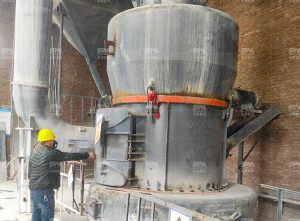Quartz powder is a fine powder obtained from the grinding and crushing of quartz crystals. Quartz, known for its hardness and chemical inertness, is one of the most abundant minerals found on the Earth’s surface. It is widely used in various industries due to its unique physical and chemical properties.
Quartz powder is made by grinding high-purity quartz crystals into fine particles. The resulting powder is white or transparent and has a high degree of hardness. It is chemically inert, resistant to weathering, and has excellent electrical properties, making it a valuable material in various industrial applications.
Quartz powder is used in a wide range of industries, including:
The manufacturing process of quartz powder involves several steps to ensure the production of high-quality, fine particles suitable for various industrial applications. The following is a typical process flow for quartz powder manufacturing:
The manufacturing process of quartz powder is critical to ensuring the quality and consistency of the final product. Advanced grinding technologies, such as those employed in the MTW European Trapezium Mill and LUM Ultrafine Vertical Mill, play a vital role in producing high-quality quartz powder that meets the stringent requirements of various industries.
By following this detailed process flow, manufacturers can produce high-purity quartz powder that meets the specific needs of their customers, ensuring the material’s optimal performance in its various applications.

Based on the absorption of advanced technologies of famous international corporations and 30 years’ experience in grinding mill production, SBM has launched the LM Vertical Grinding Mill which integrates five functions of crushing, grinding, powder selection, drying and material conveying. It is characterized by centralized technological process, small occupational area, low investment, high efficiency, energy conservation and environment protection.

MTW European Grinding Mill is innovatively designed through deep research on grinding mills and development experience. It absorbs the latest European powder grinding technology and concept, and combines the suggestions of 9158 customers on grinding mills. This grinding mill perfectly satisfies the production demands of the customers on 200-33μm (80-425Mesh) fine powder.

MRN Pendulous Hanging Grinding Mill represents the most advanced grinding processing technology. The brand-new structural design not only lowers the operation and maintenance cost, but also does well in environmental protection and finished product quality. It is available when processing the non-combustible, non-explosive brittle minerals products like limestone, calcite and marble, etc. MRN Pendulum mill is widely used in mining, building, power plant and coating industries.

LUM Ultrafine Vertical Grinding Mill is independently designed by SBM on the basis of years of experience in grinding mill production. LUM grinding mill adopts the latest Taiwan grinding roller technology and German powder separating technology. The ultrafine vertical grinding mill integrating ultrafine powder grinding, grading and transporting has become a better choice in the ultrafine powder grinding industry.

